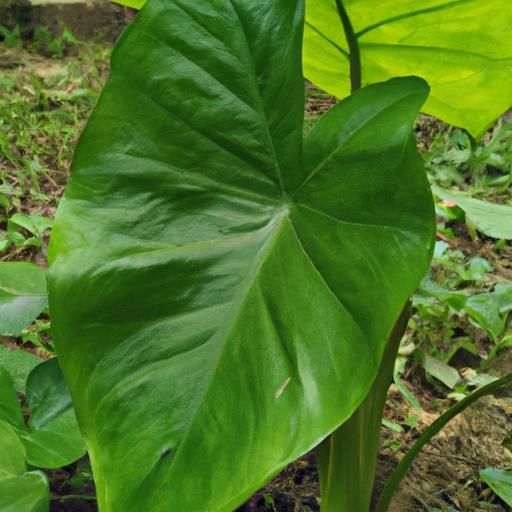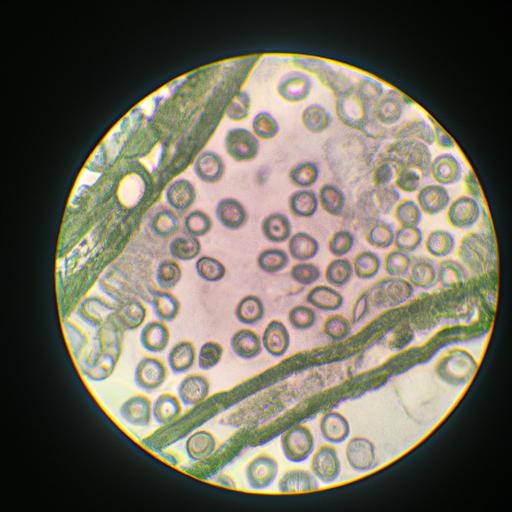Do Plants Perform Cellular Respiration?

Plants, the vibrant and essential contributors to our ecosystem, have always fascinated us with their ability to convert sunlight into energy through photosynthesis. However, have you ever wondered if plants perform cellular respiration, just like animals do? In this article, we will dive into the intriguing world of plant physiology and explore the truth behind this common misconception.
Introduction
A. Importance of Cellular Respiration in Living Organisms
Cellular respiration is a vital metabolic process that occurs in all living organisms, including plants and animals. It is the process through which cells convert organic compounds into usable energy in the form of ATP (adenosine triphosphate). ATP fuels various cellular activities, including growth, reproduction, and maintenance of cellular structures.
B. Brief Overview of Cellular Respiration Process
Cellular respiration involves a series of complex biochemical reactions that take place within the cells. It can be divided into three main stages: glycolysis, the Krebs cycle (also known as the citric acid cycle), and oxidative phosphorylation (electron transport chain). These interconnected stages extract energy from glucose and other organic molecules, producing ATP as a byproduct.
Now that we understand the importance of cellular respiration and have a basic overview of the process, let’s explore whether plants, with their unique photosynthetic abilities, also engage in cellular respiration. Join me as we debunk the myth and uncover the fascinating truth about plant respiration.
Understanding Cellular Respiration
A. Definition and Purpose of Cellular Respiration
Cellular respiration can be defined as the process by which cells break down organic molecules, such as glucose, to release energy in the form of ATP. This energy is essential for the functioning of cells and allows organisms to carry out various biological processes necessary for survival. In other words, cellular respiration is the engine that powers life itself.
B. Key Components Involved in Cellular Respiration
Several key components play crucial roles in the cellular respiration process. The first stage, glycolysis, occurs in the cytoplasm and breaks down glucose into pyruvate molecules. Following this, the Krebs cycle takes place in the mitochondria and further breaks down the pyruvate to extract energy-rich electrons. Finally, oxidative phosphorylation occurs in the inner membrane of the mitochondria, utilizing these electrons to generate ATP.
C. Role of Mitochondria in Cellular Respiration
The mitochondria, often referred to as the “powerhouses” of the cell, play a pivotal role in cellular respiration. These organelles possess their own DNA and are responsible for generating most of the ATP produced during respiration. The inner membrane of the mitochondria contains electron transport chains and ATP synthase, which work together to produce ATP through a process called chemiosmosis.
Understanding the definition, purpose, key components, and the role of mitochondria in cellular respiration is crucial in unraveling the mystery of whether plants partake in this vital process. In the next section, we will delve deeper into the respiration process in animals and compare it to that of plants, shedding light on the intriguing world of plant physiology.
The Respiration Process in Animals
A. Explanation of How Animals Perform Cellular Respiration
In the animal kingdom, cellular respiration is a fundamental process that occurs in specialized structures within cells called mitochondria. Mitochondria act as the powerhouses of animal cells, responsible for generating the majority of ATP through cellular respiration. During this process, organic molecules, such as glucose, are broken down in a step-by-step manner to release energy.
The first stage of cellular respiration, glycolysis, takes place in the cytoplasm of animal cells. Here, glucose is converted into two molecules of pyruvate, generating a small amount of ATP and NADH in the process. Next, the pyruvate molecules enter the mitochondria, where they undergo the Krebs cycle. In this cycle, the pyruvate is further broken down, releasing more ATP and producing electron carriers (NADH and FADH2). Finally, the electron carriers transfer the electrons to the electron transport chain, located in the inner mitochondrial membrane. Through a series of redox reactions, the electron transport chain generates a large amount of ATP by utilizing the energy released from the electron transfer.
B. Comparison of Respiration Process in Animals and Plants
While animals and plants share the core process of cellular respiration, there are some notable differences between the two. Animals rely solely on cellular respiration to obtain energy, as they cannot perform photosynthesis. In contrast, plants have the unique ability to utilize both cellular respiration and photosynthesis.
Plants undergo cellular respiration in a manner similar to animals, using mitochondria to break down organic molecules and generate ATP. However, plants also engage in photosynthesis, where they convert sunlight, water, and carbon dioxide into glucose and oxygen. This glucose produced during photosynthesis serves as the fuel for cellular respiration.
In summary, animals and plants both perform cellular respiration to extract energy from organic molecules. While animals solely rely on this process, plants have the additional capability of harnessing energy through photosynthesis. This fascinating difference showcases the remarkable adaptability and versatility of plant life.
Debunking the Myth: Plants and Cellular Respiration
A. Common Misconception that Plants Do Not Perform Cellular Respiration
There is a widespread belief that plants solely rely on photosynthesis to meet their energy needs and do not engage in cellular respiration. However, this notion couldn’t be further from the truth. While it is true that plants are adept at harnessing energy from sunlight through photosynthesis, they also actively participate in cellular respiration to ensure their survival.
B. Evidence Supporting the Occurrence of Cellular Respiration in Plants
Scientific studies have provided ample evidence that plants do indeed perform cellular respiration. For instance, researchers have conducted experiments using isotopes to trace the movement of carbon within plants. These studies have shown that plants consume oxygen and release carbon dioxide, which are characteristic features of cellular respiration.
Moreover, plants possess genes and proteins associated with the various stages of cellular respiration, including glycolysis and the Krebs cycle. This genetic evidence further supports the occurrence of respiration processes in plants.
C. Role of Plant Organelles in Cellular Respiration
Just like in animal cells, cellular respiration in plants primarily occurs in the mitochondria. These tiny powerhouses within plant cells carry out the intricate biochemical reactions involved in respiration. The mitochondria enable the breakdown of glucose and other organic molecules, releasing energy that is stored in ATP.
Additionally, plant cells also contain specialized organelles called peroxisomes that contribute to cellular respiration. Peroxisomes are involved in the breakdown of fatty acids, which can be utilized as an energy source during plant respiration.
With the debunking of this prevalent myth and the evidence supporting the occurrence of cellular respiration in plants, it becomes clear that plants are not solely dependent on photosynthesis. They actively engage in cellular respiration, just like their animal counterparts, to ensure the continuous flow of energy required for growth, development, and various physiological processes.
Factors Affecting Plant Cellular Respiration
Plants, like any other living organisms, are influenced by various environmental factors that can affect their cellular respiration. Understanding these factors is crucial in comprehending the intricacies of plant physiology. Let’s delve into the impact of environmental conditions on plant respiration and uncover the relationship between plant growth and cellular respiration.
A. Impact of Environmental Factors on Plant Respiration
The respiration rate of plants can be significantly influenced by environmental conditions. One of the primary factors affecting plant respiration is temperature. Warmer temperatures generally lead to an increase in respiration rates, while colder temperatures can slow down the process. This is because temperature affects enzyme activity, which is crucial for the metabolic reactions involved in respiration.
Light availability also plays a significant role in plant respiration. During photosynthesis, plants produce glucose using sunlight. This glucose is then utilized in cellular respiration to generate energy. Therefore, light availability directly impacts the rate of photosynthesis, which, in turn, affects the availability of glucose for respiration.
B. Role of Temperature, Light, and Water Availability in Plant Respiration
Temperature and light are not the only environmental factors that influence plant respiration. Adequate water availability is also essential for efficient respiration. Water is involved in various metabolic processes within plant cells, including respiration. Insufficient water can lead to dehydration and hinder cellular respiration, ultimately affecting the overall plant health and growth.
C. The Relationship Between Plant Growth and Cellular Respiration
The relationship between plant growth and cellular respiration is symbiotic. Cellular respiration provides the energy necessary for plant growth and development. As plants grow, their metabolic demands increase, leading to higher rates of respiration. Conversely, healthy and efficient cellular respiration supports optimal plant growth.
Understanding the factors that affect plant cellular respiration allows us to optimize plant growth conditions. By providing the right balance of temperature, light, and water, we can ensure that plants can carry out respiration effectively, leading to robust and thriving plant life.
In the next section, we will debunk the misconception surrounding plants and cellular respiration, shedding light on the evidence that supports the occurrence of this essential metabolic process in plants. Stay tuned!
Conclusion
After delving into the world of plant physiology and exploring the truth about plant cellular respiration, we can confidently conclude that plants do indeed perform cellular respiration. Despite their remarkable ability to generate energy through photosynthesis, plants rely on cellular respiration to extract and utilize that energy efficiently.
Throughout this article, we have debunked the misconception that plants solely rely on photosynthesis for energy production. We have explored the evidence supporting the occurrence of cellular respiration in plants, highlighting the role of plant organelles, such as mitochondria, in this process.
Understanding plant cellular respiration is crucial as it sheds light on the intricate balance of energy production and consumption in plants. Environmental factors, such as temperature, light, and water availability, can influence plant respiration rates, ultimately affecting plant growth and development.
In conclusion, plants, just like animals, engage in cellular respiration to sustain their cellular functions and meet their energy requirements. By unraveling the mysteries of plant respiration, we gain a deeper appreciation for the complexity and adaptability of these magnificent organisms.
As we continue to explore the wonders of the natural world, let us remember that plants are not only masters of photosynthesis but also active participants in cellular respiration. The symbiotic relationship between photosynthesis and cellular respiration showcases the remarkable interconnectedness of life on Earth.
Thank you for joining me on this captivating journey of discovery. Now, armed with this knowledge, let us appreciate the intricate processes that allow plants to thrive and contribute to the beauty and balance of our planet.
Conclusion: So above is the Do Plants Perform Cellular Respiration? article. Hopefully with this article you can help you in life, always follow and read our good articles on the website: plants.123didulich.com



